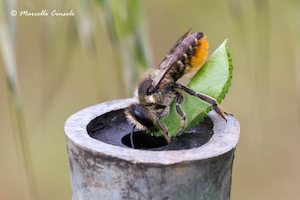Megachile spp.

Photo Credit: © Marcello Consolo via iNaturalist.org. Creative Commons Attribution-NonCommercial-ShareAlike 4.0 International (CC BY-NC-SA 4.0) License; https://creativecommons.org/licenses/by-nc-sa/4.0/.
Megachile spp.
Common Name: leafcutter bee
Animal Guild: Insect
Class > Order > Family: Insecta > Hymenoptera > Megachilidae
ITIS information for
leafcutter bee (ITIS TSN: 154366 )